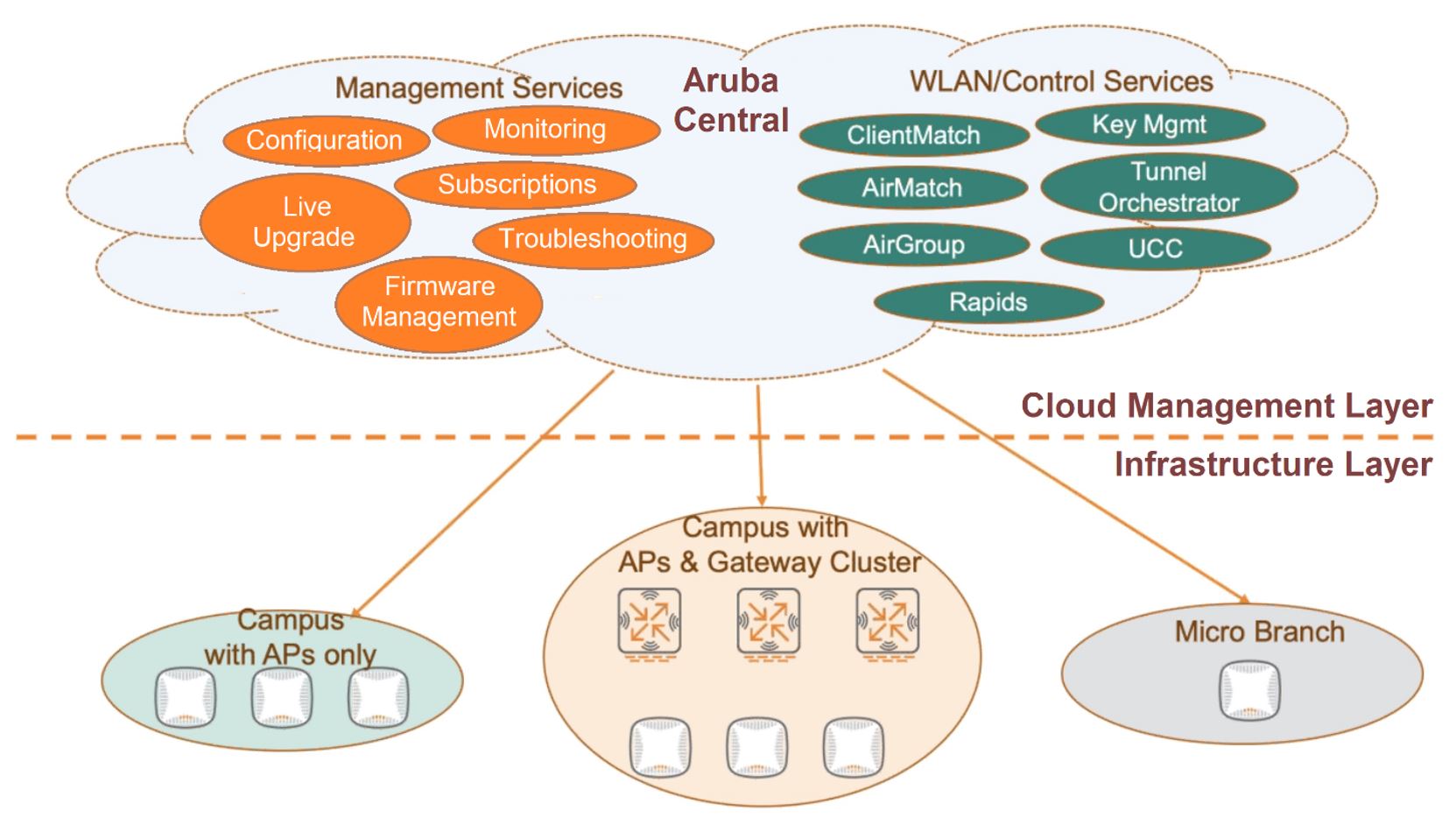ArubaOS 10: Next-Gen, Distributed OS for Enterprise WLAN (Enhanced Scale, Security, and Availability)
In campus and branch networks, the WLANs are critical to address the challenges of widespread user mobility, client density, and security. Over the last few years, the architecture of WLANs has evolved significantly to keep pace with the changing needs of wireless users. However, with digital transformation and applications moving to cloud, WLANs must rapidly evolve to provide seamless user experience and operational simplicity to quickly deploy, manage, and monitor networks.

To address some of these business challenges, Aruba offers devices running ArubaOS 10 (AOS 10). AOS 10 is the distributed network operating system working in tandem with Aruba Central that controls Access Points (APs) and gateways.
WLANs can now be deployed and managed from a single and unified cloud-based network management system. AOS 10 simplifies network administration in Aruba Central with automated workflows, end-to-end visibility, AI powered insights, and analytics to enhance and optimize wireless experience for users.
With AOS 10, onboarding, configuring, and provisioning APs and gateways is simpler and requires no manual CLI configuration or maintenance windows.
AOS 10 has been designed to deliver scalability, greater reliability, embedded AI and machine learning optimization, and simplified licensing and consumption. It also provides greater flexibility to support new use cases such as remote work and IoT. AOS 10 requires Aruba Central, a core component of Aruba’s ESP strategy to convert data at the Edge into meaningful business and IT outcomes.
Campus Architecture with Devices Running AOS 10

The Aruba campus architecture consists of two layers:
The Infrastructure layer consists of a WLAN setup which can be either a campus setup or a branch setup. The campus setup can consist only of APs or APs combined with gateway clusters. In case of a branch setup, the infrastructure layer includes an AP.
The Cloud management layer consists of Aruba Central, which is a cloud management SaaS platform and The Network Operations App, which is a part of Aruba Central and helps to create the SSID profiles for the different WLAN campus and branch setups.
Aruba Central and the Network Operations App offer the following services for the underlying infrastructure layer:
- Management Services for managing WLAN devices: Onboarding, Configuration, Monitoring, Live Upgrades, Licensing and Troubleshooting.
- WLAN Services for managing and monitoring the WLAN setup as a whole: AirMatch RF Management and Optimization, Unified Communications application (UCC), ClientMatch, AirGroup, Cloud-Assisted Roaming Services, Rogues and Intrusion Detection and Tunnel Orchestrator.

Cloud-native AOS 10 is included with Aruba Central subscription-based licenses, which are purchased on a per-device basis for APs and Gateways. Customers can also purchase subscription licenses on a per-device basis for switches in Central. Licenses are available in 1, 3, 5, 7, and 10 year increments, making it easy for customers to align requirements for AIOps, security, and other desired management features.
As part of Aruba ESP, Aruba Central has experienced significant growth. Today, Aruba Central manages over 100 million client endpoints and 1.5 million devices across 100,000 organizations around the world.

Aruba Central platform can run on public, private, or hybrid clouds, enables the onboarding of devices to the infrastructure layer and also provides value-added services such as customized guest access, client presence, service assurance analytics and a number of apps for more network services. The Network Operations App is one such app that is used to create the SSID workflows for AOS 10.x APs and to monitor the infrastructure layer.

